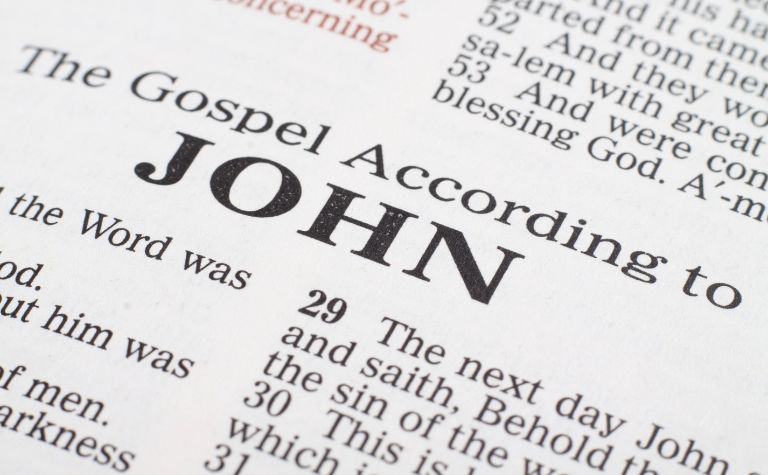Bible readers love the Gospel of John, partly because the stories within it are powerful yet easy to understand. However, a certain description, which appears in multiple stories, confuses many readers. For example, in some scenes, the Gospel refers to a certain individual as “the disciple whom Jesus loved” and doesn’t use a proper name. This description leads many readers to wonder who the mysterious disciple was.
According to conservative Bible scholars, the disciple whom Jesus loved is most likely the Apostle John, the son of Zebedee, and brother of James. This John is the same one who is traditionally attributed with writing the Gospel of John, the letters of 1-3 John, and the book of Revelation.
Why isn’t there a consensus that the beloved disciple is John? Why do conservative Bible scholars think the beloved disciple is John? In what stories does the beloved disciple appear in John’s Gospel, and what do the details reveal about the beloved disciple’s identity? Keep reading to learn the answers to these questions and others.
Also see Who Helped Jesus Carry the Cross? to learn more.

Why isn’t there a consensus that the beloved disciple is John?
The description of “the disciple who Jesus loved” only appears in the Gospel of John and only in chapters 13 to 21, which cover the time between the Last Supper and Jesus’ resurrection appearances.
The identity of the beloved disciple is closely tied to the authorship of the Gospel of John because the last passage of the book reveals that they are the same person (more below).
While people commonly refer to the figure as “the disciple who Jesus loved,” translations render the description slightly different. Readers can see this in a comparison of John 13:23.
| Translation | John 13:23 |
|---|---|
| ESV | One of his disciples, whom Jesus loved, was reclining at table at Jesus’ side |
| KJV | Now there was leaning on Jesus’ bosom one of his disciples, whom Jesus loved. |
| NASB | There was reclining on Jesus’ bosom one of His disciples, whom Jesus loved. |
| NIV | One of them, the disciple whom Jesus loved, was reclining next to him. |
| NLT | The disciple Jesus loved was sitting next to Jesus at the table. |
New Testament scholar Herman Ridderbos argues that the root of the issue regarding the beloved disciple’s identity is who wrote the Gospel. If a person believes it was John, son of Zebedee, then he (John) is the beloved disciple. If not, it’s someone else.
Ridderbos writes, “Those who follow the ancient tradition recognize the apostle John in this disciple without any problem, but those who reject Johannine authorship — the large majority of modern interpreters — have, of course, greater difficulty with this identification.” [1]
Also see Why Did Judas Iscariot Betray Jesus Christ? to learn more.

Who do conservative Bible scholars think the beloved disciple is?
Many conservative scholars believe that John, son of Zebedee, is the beloved disciple. Some conclude that even though they aren’t 100% certain that the beloved disciple in John, the available evidence makes a strong case for him. Here are three examples from conservative commentaries on John’s Gospel.
- D.A. Carson writes, “If we compare the four canonical Gospels, by a process of elimination, we arrive at John the son of Zebedee as the most likely identity of the disciple whom Jesus loved.” [2]
- Craig Keener writes, “Of the Twelve known from early Christian tradition, only John son of Zebedee could fulfill the role of the beloved disciple. A number of scholars recognize that John fits the evidence in the Fourth Gospel for this beloved disciple.” [3]
- Andreas Kostenberger writes, “The expression ‘the disciple Jesus loved’ probably refers to the historical figure of John the son of Zebedee as an oblique form of self-reference on part of the evangelist. Since doubtless his recipients know him well, the author can dispense with his prophet name.” [4]
Who do other scholars think the beloved disciple is? There is no consensus about who the beloved disciple is among those who reject the contention that it’s John. Some suggest that it could be Lazarus since the Gospel mentions Jesus’ love for him (11:3). However, this wouldn’t explain how Lazarus was present at the Last Supper (more below).
Others guess that it could be James, even though there is little evidence for it. A few speculate that it could be Paul, though most reject the idea as baseless. Finally, a popular suggestion among non-conservative scholars is that the beloved disciple isn’t a historical figure, but is a fictitious literary symbol of an ideal disciple.
Why does John use the term “the disciple that Jesus loved”?
First, the term doesn’t reflect that Jesus loved John more than anyone else. It reflects that Jesus loved even him. Second, the phrase depicts that John is a follower of Jesus. The label describes God’s mercy, grace, and goodness, and John’s faith, identity, and worth.
Why wouldn’t John just use his own name?
Not using his name may have been an act of humility in relation to Jesus, but also in regard to John the Baptist. John, son of Zebedee, may have intended that his readers know “John” as the baptizer instead of himself. While other Gospel writers identify the baptizer as “John the Baptist” (e.g. Matt. 3:1), John simply refers to him as “John” (John 1:6).
Also see Why Did Jesus Speak In Parables? to learn more.

In what stories does the beloved disciple appear?
The beloved disciple appears in stories in John 13:21, including the Last Supper, the crucifixion, the resurrection, and the restoration of Peter.
The beloved disciple is at the Last Supper
John 13:23 is the first time the description of “the disciple that Jesus loved” appears in the Gospel. He is pictured as literally leaning on Jesus as they sat next to each other at the Lord’s Supper.
Matthew and Mark make clear that only the 12 apostles were at the Lord’s Supper (cf. Matt. 26:20; Mark 14:17), so the beloved disciple is one of that group.
At the Lord’s Supper, Jesus announces that one of the 12 would betray him. Peter then motioned for the beloved disciple, who was sitting next to Jesus, to ask him who it was (13:23-24).
This suggests that the beloved disciple is one of the twelve apostles, but it isn’t Peter. Peter is also distinguished from the beloved disciple in other passages in John (more below).
The beloved disciple is at the cross
The description of the beloved disciple appears next at the death of Jesus. When Jesus was on the cross, he saw his mother, Mary, and told the beloved disciple to take care of her.
“When Jesus saw his mother and the disciple whom he loved standing nearby, he said to his mother, ‘Woman, behold, your son!’ Then he said to the disciple, ‘Behold, your mother!’ And from that hour the disciple took her to his own home” (John 19:26-27).
Though the passage doesn’t identify the beloved disciple as John, there is a good reason for thinking it was him. Taking care of Mary was important to Jesus, and his brothers weren’t present. It makes sense that he would assign the task to his close friend, John.
Also see What Is a Manger in the Bible? to learn more.
The beloved disciple is at the resurrection
The third time readers encounter the beloved disciple is on the Sunday morning of Jesus’ resurrection. In the scene, Mary Magdalene “came running to Simon Peter and the other disciple, the one Jesus loved” and said, “they have taken the Lord out of the tomb, and we do not know where they have laid him” (John 20:2).
The men ran to the tomb, which the beloved disciple reached before Peter (v. 3-4). They saw the strips of linen, which had been wrapped around Jesus’ body (v. 5-7). Peter went into the tomb to look inside, and then the other disciple, who had reached the tomb first, also went inside. He saw and believed” (v. 8).
The beloved disciple is at Jesus’ appearance to Peter
John 21 identifies John as the disciple who Jesus loved if the reference to the one who wrote down these stories (v. 24) refers to the entire Gospel, not just the last chapter, as some scholars contend.
After Jesus told Peter about his future (21:18-19), Peter asked about the future of the disciple who Jesus loved. “Peter turned and saw that the disciple whom Jesus loved was following them. (This was the one who had leaned back against Jesus at the supper and had said, ‘Lord, who is going to betray you?’) When Peter saw him, he asked, ‘Lord, what about him?'” (21:20-24).
Jesus tells Peter to worry about himself, but he said it in a way that created a rumor. “If I want him to remain alive until I return, what is that to you? You must follow me. Because of this, the rumor spread among the believers that this disciple would not die. But Jesus did not say that he would not die; he only said, If I want him to remain alive until I return, what is that to you?” (21:22-23).
The beloved disciple would have needed to live long enough for a rumor about his death (or lack thereof) to circulate. This aligns with the fact that the evidence suggests that John likely outlived all of the apostles.
John then reveals that the disciple that Jesus loved is the author of the Gospel. “This is the disciple who testifies to these things and who wrote them down. We know that his testimony is true” (21:24).
Also see What Does the Easter Bunny Have To Do With Jesus? to learn more.
Reference:
[1] The Gospel of John by Herman Ridderbos. p. 1.
[2] The Gospel According to John by D.A. Carson. PNTC. p. 473.
[3] The Gospel of John, Volume 1 by Craig Keener. p. 84.
[4] John by Andreas Kostenberger. BECNT. p. 414.
Related Questions
Every day there are people who make the decision to follow Jesus Christ after they hear the gospel and respond to it in faith and repentance. Yet after that decision is made, many people want to know...
The word "disciple" appears 261 times in the 27 books of the New Testament. It's one of the most common words associated with Jesus Christ in the Gospels. While "disciple" has the same basic meaning...
